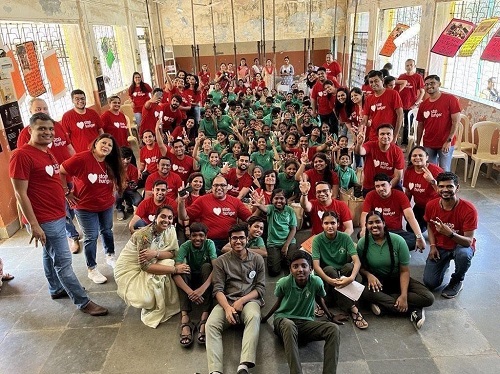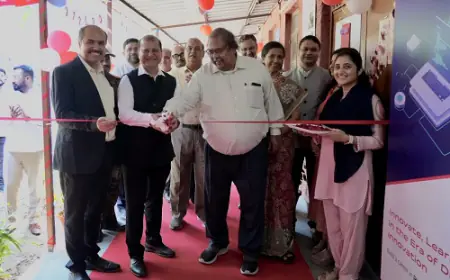Real Estate Sector Witness Strong Growth Potential and High Demand in Tier II Cities
Tier II cities have emerged as the driving force behind Indias real estate boom. For the longest period, these resource-rich cities remained untapped. In the past few years, the real estate sector in India witnessed a remarkable shift in growth and demand. Tier-II cities are now having exponential urbanization as investors, entrepreneurs, developers, and occupiers, aided by the government, see enormous business opportunities. A residential society in Modipuram, Meerut With rising urbanization and increasing population, there is a growing need for affordable housing options. Developers are now focusing on providing quality homes at reasonable prices in Tier II cities, which has led to a surge in residential demand. The increasing demand for real estate in these cities, especially Karnal, Meerut, and Amritsar are experiencing phenomenal growth due to improving lifestyles, economic prosperity, infrastructural development, and the rise of new business opportunities. As a result, these cities are attracting both domestic and international investors, who are keen to take advantage of the high growth prospects in the residential and commercial segments. "Nowadays, people are investing in Tier II and Tier III Cities, making these cities lucrative investment destinations. In such cities, like Karnal and Meerut, the cost of living is less, the work-life balance is better and housing remains affordable, as compared to megacities, despite a huge jump in values in the past decade, backed by infrastructure development. This has inspired Indian real estate developers, as well as state governments, to focus more on these tier II and tier III cities in India which have high potential," says Santosh Agarwal, CFO and Executive Director, Alpha Corp. According to industry reports, tier-II cities witnessed 152,000 newly launched units along with a total absorption of 183,000 units. Tier II cities have lower housing costs, affordable land prices, better loan rates, and easy financing, making them attractive to home buyers and developers. Moreover, the governments focus on infrastructure development and excellent connectivity has also contributed to its growth. The development of airports, highways, metro networks, upgraded transport facilities, and other infrastructure projects have made these cities more accessible, which has resulted in increased demand for commercial real estate. With the increasing focus on entrepreneurship and startups, many Tier II cities are emerging as new business hubs. This has led to a surge in demand for commercial real estate, especially office spaces and co-working spaces. S K Narvar, Group Chairman, Trident Realty says, "The real estate sector is on an impressive growth trajectory. Besides metros, developing cities have been witnessing healthy demand for housing units emerging as new realty markets. With the rapid infrastructural developments, the rise in the number of aspiring homebuyers, and the transforming lifestyle, there is significant traction for premium and luxury residences in Tier-2 markets like Tri-city. The relative affordability, seamless connectivity, a cleaner environment, peace, and tranquility have driven demand for residential properties in Tri-city. Furthermore, with work-from-anywhere culture becoming more prevalent, many people are moving back to their hometowns, driving residential property demand. Panchkula is swiftly emerging into a residential hub in Tricity (Chandigarh). Due to its strategic location, planned development, and seamless connectivity with other key cities, the city has swiftly emerged as a preferred destination amongst homebuyers." The growth potential in Tier II cities has set unprecedented benchmarks in the real estate market, and this momentum is expected to continue this year. With the increasing demand for both residential and commercial real estate, developers are expected to focus more on Tier II cities to capitalize on the high growth prospects.

Tier II cities have emerged as the driving force behind Indias real estate boom. For the longest period, these resource-rich cities remained untapped. In the past few years, the real estate sector in India witnessed a remarkable shift in growth and demand. Tier-II cities are now having exponential urbanization as investors, entrepreneurs, developers, and occupiers, aided by the government, see enormous business opportunities.
 |
A residential society in Modipuram, Meerut
With rising urbanization and increasing population, there is a growing need for affordable housing options. Developers are now focusing on providing quality homes at reasonable prices in Tier II cities, which has led to a surge in residential demand. The increasing demand for real estate in these cities, especially Karnal, Meerut, and Amritsar are experiencing phenomenal growth due to improving lifestyles, economic prosperity, infrastructural development, and the rise of new business opportunities. As a result, these cities are attracting both domestic and international investors, who are keen to take advantage of the high growth prospects in the residential and commercial segments.
"Nowadays, people are investing in Tier II and Tier III Cities, making these cities lucrative investment destinations. In such cities, like Karnal and Meerut, the cost of living is less, the work-life balance is better and housing remains affordable, as compared to megacities, despite a huge jump in values in the past decade, backed by infrastructure development. This has inspired Indian real estate developers, as well as state governments, to focus more on these tier II and tier III cities in India which have high potential," says Santosh Agarwal, CFO and Executive Director, Alpha Corp.
According to industry reports, tier-II cities witnessed 152,000 newly launched units along with a total absorption of 183,000 units. Tier II cities have lower housing costs, affordable land prices, better loan rates, and easy financing, making them attractive to home buyers and developers. Moreover, the governments focus on infrastructure development and excellent connectivity has also contributed to its growth. The development of airports, highways, metro networks, upgraded transport facilities, and other infrastructure projects have made these cities more accessible, which has resulted in increased demand for commercial real estate. With the increasing focus on entrepreneurship and startups, many Tier II cities are emerging as new business hubs. This has led to a surge in demand for commercial real estate, especially office spaces and co-working spaces.
S K Narvar, Group Chairman, Trident Realty says, "The real estate sector is on an impressive growth trajectory. Besides metros, developing cities have been witnessing healthy demand for housing units emerging as new realty markets. With the rapid infrastructural developments, the rise in the number of aspiring homebuyers, and the transforming lifestyle, there is significant traction for premium and luxury residences in Tier-2 markets like Tri-city. The relative affordability, seamless connectivity, a cleaner environment, peace, and tranquility have driven demand for residential properties in Tri-city. Furthermore, with work-from-anywhere culture becoming more prevalent, many people are moving back to their hometowns, driving residential property demand. Panchkula is swiftly emerging into a residential hub in Tricity (Chandigarh). Due to its strategic location, planned development, and seamless connectivity with other key cities, the city has swiftly emerged as a preferred destination amongst homebuyers."
The growth potential in Tier II cities has set unprecedented benchmarks in the real estate market, and this momentum is expected to continue this year. With the increasing demand for both residential and commercial real estate, developers are expected to focus more on Tier II cities to capitalize on the high growth prospects.
![]()


































































































